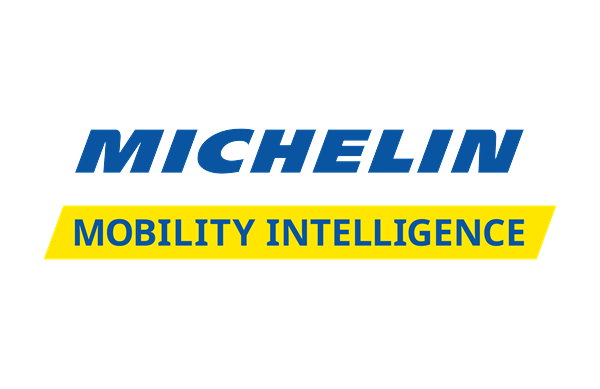Michelin Mobility Intelligence


Michelin has worked with GHSA and its members on teens and tire safety and, more recently, on traffic safety data and analysis.


Michelin has worked with GHSA and its members on teens and tire safety and, more recently, on traffic safety data and analysis.
GHSA and Michelin Mobility Intelligence (MMI) provided $300,000 in competitive grants to three states to harness cutting-edge data to gain new insights that can make roads safer for everyone using them.
The State Highway Safety Offices (SHSOs) in Connecticut, North Dakota and Washington each received $100,000 in Michelin data services, allowing them to develop a more current, complete and nuanced understanding of traffic safety issues, risk hotspots and where to deploy resources.
The Connecticut Highway Safety Office worked closely with MMI and analyzed driver behavior in work zones to assess the impact of speed safety cameras. Using telematics, traffic and crash data from pilot zones with cameras (2023) and control zones without cameras (2024), the study identified behavioral differences such as braking, acceleration and lane deviations.
The analysis found clear behavioral differences. Harsh braking occurred more often than harsh acceleration, though acceleration typically covered more distance. Near-miss events peaked on Fridays and during late morning to evening hours, while early mornings and wet weather saw fewer incidents.
When speed cameras and signage were present, drivers demonstrated greater caution, leading to fewer harsh braking and acceleration events and reduced overall speeds.
The results confirm that speed safety cameras enhance driver awareness and reduce risky driving in work zones. The evaluation established a baseline model to support future statewide analysis and linked driver behavior patterns to crash outcomes using measures like annual average daily traffic (AADT), vehicle miles traveled (VMT) and weekly crash counts.
The North Dakota Department of Transportation (NDDOT) analyzed Highway Safety Corridors (HSCs) to assess roadway risk and driver behavior using crash and telematics data. The study confirmed that HSCs effectively reduce severe crashes while identifying opportunities for expansion.
Three existing HSCs ranked among the four highest-risk corridors, indicating ongoing safety challenges despite improvements. Two non-HSC corridors emerged as strong candidates for future designation, while two HSCs outperformed comparable routes. Overall, fatal and severe crashes in HSCs fell by 39% between 2019 and 2021–2024 averages, compared to a 15% increase statewide.
The findings validate the effectiveness of the HSC strategy and will guide NDDOT in expanding corridor safety programs to reduce crash severity and improve roadway safety across North Dakota.
The Washington Traffic Safety Commission (WTSC) developed Kepler maps for all eight Washington State Patrol (WSP) districts to visualize speeding risk and guide enforcement planning. Using telematics data, the MMI team produced interactive Kepler maps that display color-coded corridors showing speeding severity across different times of day, overlaid with five years of injury crash data to highlight where speeding and crash risks intersect.
The maps help troopers validate enforcement zones, identify emerging speeding hotspots and generate time- and day-specific reports to optimize patrol deployment.
The project showcased how telematics-based tools can transform enforcement planning, enabling data-driven decisions that optimize patrol deployment and maximize safety impact. WSP and WTSC continue to evaluate the maps’ operational impact through statewide trooper surveys and plan to integrate telematics and deployment data into WSP’s internal GIS systems.
GHSA and MMI awarded $100,000 data grants to the three SHSOs:
California: The California Office of Traffic Safety (OTS) and California Highway Patrol (CHP) worked closely with MMI to evaluate data and identify risky areas along a section of the Pacific Coast Highway (PCH) in Malibu. There was a particular focus on vulnerable road users, speed and breaking analyses, and driving behaviors. The results showed a 7% decrease in average speed on the PCH, and the number of harsh breaking events decreased 14%. California used the credits to analyze data to examine behavior change before and after the enhanced enforcement efforts.
Minnesota: The Minnesota Department of Public Safety Office of Traffic Safety (OTS) conducted a comprehensive data analysis of phone handling behaviors, speeding incidents and crash occurrences. This involved statistical modeling and correlation assessments to identify the extent to which phone handling influences driving speed and contributes to crashes. Evaluation of these data is ongoing. Key findings include:
OTS also identified risky driving behavior hotspots and places more dangerous to vulnerable road users.
Washington: The Washington Traffic Safety Commission (WTSC) identified South King County and Yakima County as areas that are overburdened and underinvested, resulting in higher rates of fatal crashes impacting historically marginalized communities and disproportionately impacting Native American, Black and Hispanic populations.
The MMI team produced interactive Kepler maps for these counties that included the entire roadway network within these counties. The maps showed where hard braking, acceleration and high travel speeds occur. They also identified vulnerable road user high-risk segments. Law enforcement and engineers used these maps to conduct network screening analysis, and the South King County Target Zero team worked with MMI to understand the corridor analysis and how to use these data to make safety gains.
At the project's conclusion, WTSC produced a comprehensive report that examines state crash data to identify the areas most at risk, summarizes the multiple data studies conducted in two two counties, and offers key conclusions and takeaways. Learn more from WTSC:
Since 2014, Michelin has been working to promote the inclusion of tire safety information in new-driver training materials through its Beyond the Driving Test program. All 50 states and the District of Columbia have committed to include this information.

In August 2020, GHSA partnered with Michelin North America to survey U.S. parents of novice drivers to determine if the COVID-19 pandemic has impacted their teens’ driver education/licensing. A news release and infographic discussing the survey findings were released on October 19 in conjunction with National Teen Driver Safety Week. This was followed by a satellite media tour, during which GHSA and Michelin officials discussed the survey findings and offered tips to help parents fill the gap in formal training caused by the pandemic. Michelin also addressed the importance of parents teaching their teens how to check tire tread depth and air pressure, which affect vehicle safety. The tour generated more than a dozen television interviews with local network affiliates and nationally syndicated outlets.
The survey findings and tips were also shared via social media. In addition, GHSA provided the news release and infographic to the State Highway Safety Offices, as it presented an opportunity to promote state and/or partner teen driving resources.